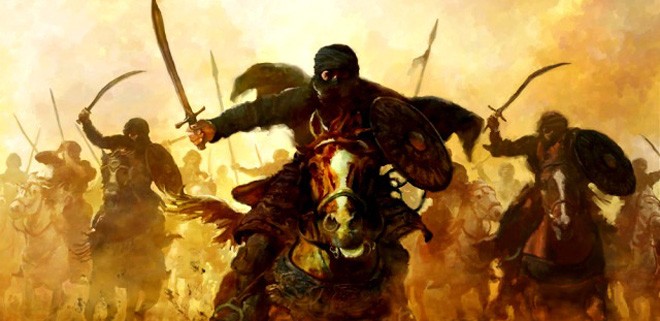

Like khalafah, umma, jihad and shahadat, takfir has attained a wide currency in modern day Muslim discourse. For analysts, takfir has a peculiar specificity, especially when referring to modern day proponents of revivalist Islam.
Takfir denotes excommunication or declaration of a person or group of people to be non-Muslim. Although the instances of takfir can be gleaned from the early history of Muslims, it started featuring regularly in the Muslim discourse since the last quarter of the 19th century.
Deobandi clerics were at the centre of the trend of issuing takfiri fatwas. Though not a takfiri treatise as such, Rashid Gangohi’s Hadayatush Shia (Advice to the Shia) is the first published account where one can detect its sign. A Deobandi cleric, Abdul Shakoor Lukhnavi, not only built his career on denouncing Shias but left behind a strong legacy.
For the last three decades or so, Shia Muslims have been the principal subject of takfir, which has been practised not only in Pakistan and Afghanistan but in much of the Middle Eastern region. Western academics, specialising in Islam, seem to be quite curious about the conceptual underpinnings of this practice and its intellectual genealogy.
In the mainstream classical version of Sunni Islam, takfir has been considered as a source of fitna (dissention). To denounce someone as kafir meant pre-empting Allah’s judgement.
Of late, Sunni clerics have embarked on the takfiri path, rejecting components of society, culture and law in Muslim countries, which many of them consider have slipped back into a pre-Islamic state of jahiliyya.
Ironically, because of the tenuous relationship between the concepts of political Islam and nation-state, proponents of takfir often espouse militancy against their own state and its people.
So far as the genealogy of takfir is concerned, one has to go back in history to the breakaway faction of the Kharijites, in the wake of the battle of Siffin in 657 AD between Hazrat Ali and Amir Muawiya. However, takfir was deployed by Taqi al-Din Ibn Taymiyyah, who declared the new converts, the Mongols, as kafirs because their enforcement of the ‘manmade’ Yassa law in place of Islamic Shariah reversed their conversion, rendering them apostate.
Interestingly, in that fatwa he referred to the breakaway of the Kharijites. Thus it became obligatory to wage war against them. The political leadership acted on this fatwa, establishing a valuable precedent for Islamic radicals centuries later.
The 18th century Islamic puritan Muhammad Ibn Abd al-Wahab, Ibn Taymiyyah’s legatee, came up with an interpretation which allowed him to fight against fellow Muslims.
Ibn Wahab categorically denounced many mainstream Muslim traditions (like Sufism) as bid’a (innovation) and his disciples slew many Muslims for allegedly practising kufr. The current spate of sectarian killings, premised on takfir, is a product of these centuries-old fatwas, which had until recently remained peripheral. That trend became apparent in the writing of the exponents of Islamism like Abul Ala Maududi and Sayyid Qutb who had a tangible rub on several takfiri groups in recent years.
One such group is Takfir wal Hijra (TwH), a takfiri Salafi group, founded by Shukri Mustafa when he fell out with the Egypt-based organisation, Ikhwan al Muslimun in 1971. The current head of al-Qaeda, Ayman al-Zawahiri is believed to have been a member of TwH. Its strategy was to isolate from the general society while building strength for a planned uprising. That was in fact in conjunction with the teachings of Qutb, who enjoined that the nascent Islamic jama’at needed to set itself apart from the society. However, he vaguely stated that some contact should be maintained.
But that strategy did not bear any worthwhile fruit. Consequently, TwH had a further split in its ranks, and Abdus Salam Faraj formed his own group by the name of al-Jihad.
Faraj was of the view that the TwH’s isolation during the ‘period of weakness’ was a cowardly act to avoid the obligation of jihad. Al-Jihad opted to infiltrate the state apparatus to make it implode. This model could not yield desired result because the necessary aspect of training the human resource and strengthening the organisation was not taken into account.
Al-Qaeda under Zawahiri morphed these competing models. The outcome of that synthesis called for, in the absence of an Islamic state, a geographical location where the Muslim community can migrate (hijra) such as Afghan training camps in Fata (Pakistan), Northern Iraq or Afghanistan. That model accredited to the genius of Zawahiri does not prescribe a prolonged period of inactivity. It rather prefers alternating periods of hijra with periods of coexistence and infiltration with the outside world which is a brilliant ideological synthesis of the strategies of TwH and al-Jihad.
Takfir remained their crucial ploy for legitimising their act of violence. That is the context in which the current upsurge of the Salafi Jihadist came about in Pakistan and Afghanistan with a strong support base in Middle East. Their constant mobility and motivation makes it into a daunting task for any nation-state to pin them down.
Having said that, one must not forget that the existence of such groups, like ISIS, Islamic Movement of Uzbekistan or some other splinter groups of al-Qaeda, will sustain themselves only at our peril.